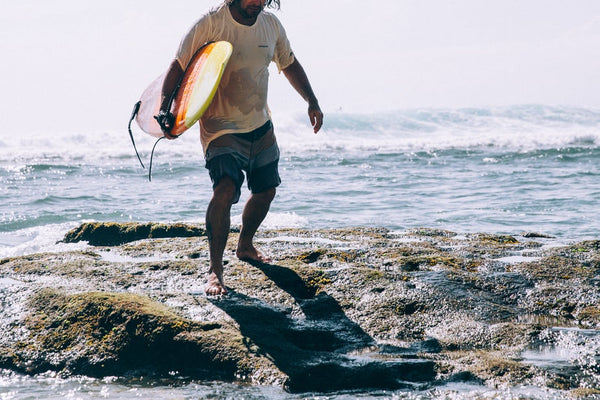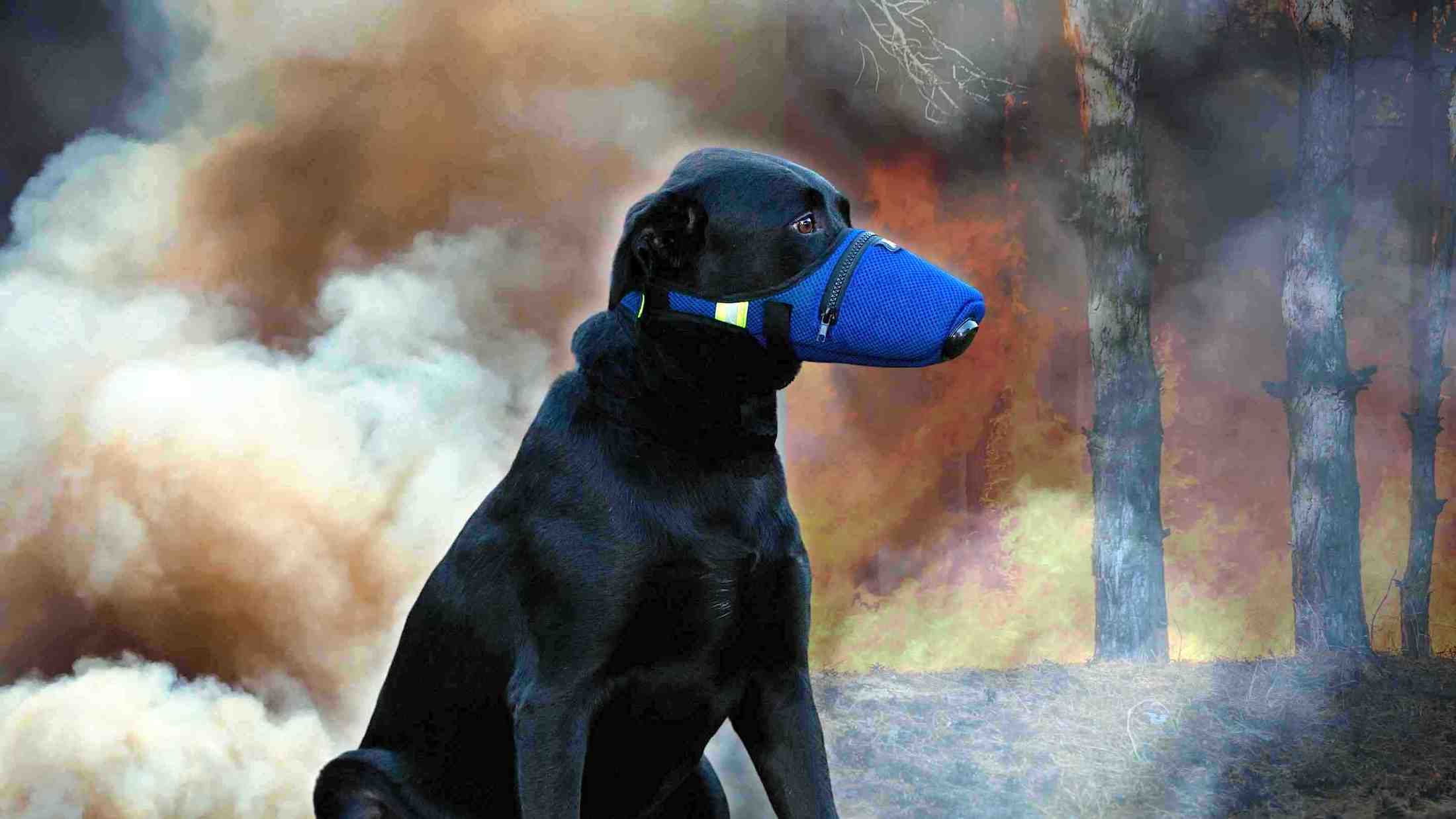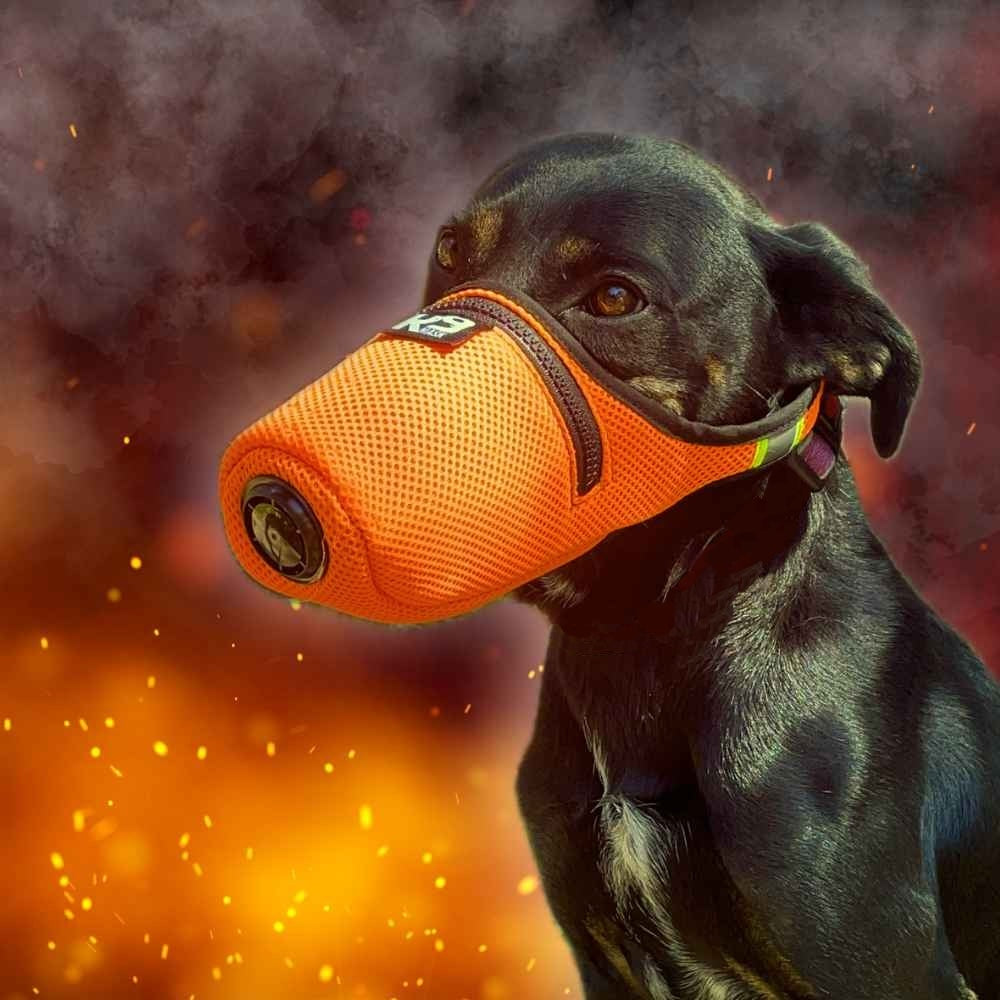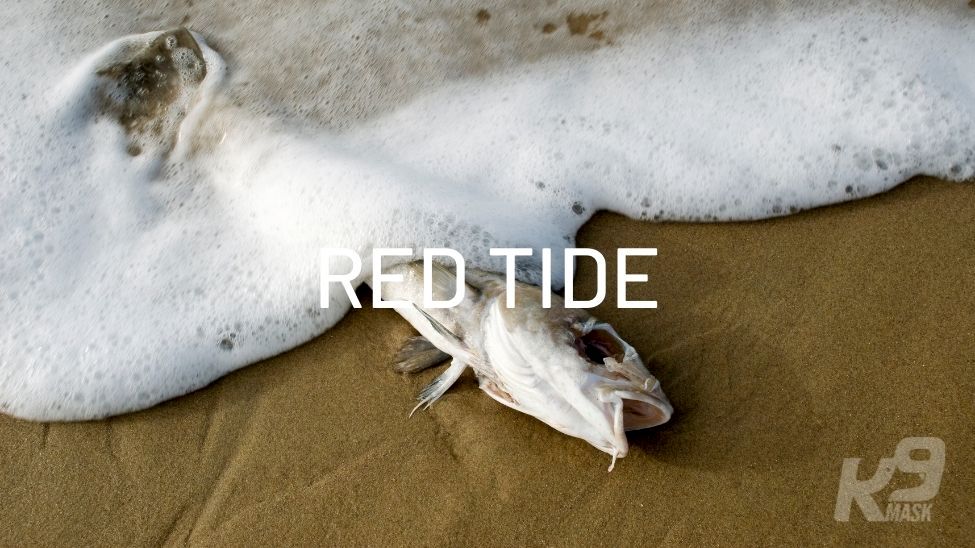You may have heard of red tides on the news. What is it? It sounds dangerous and disgusting. These are caused by algal blooms, which deplete the water's oxygen, discolor the waves and release toxins into the water.
And these red tides kill, more specifically, fish, dolphins, manatees, and many other animals in the ocean. But they can be harmful to humans and pets without you even ever setting foot near the water.
Man-made pesticides and other chemicals people use are washing into our oceans and creating harmful algal blooms. Some of these algal outbreaks are toxic, killing marine animals, causing respiratory problems in humans and dogs, and making some of our shellfish unsafe to eat.

Karenia Brevis: The Toxic Microorganism Impacting Beaches
So, what exactly is a red tide? The red tide is caused by a microorganism called Karenia brevis, also known as K. brevis. It feeds off various nutrients and is commonly seen spread in the Gulf Coast of the United States by currents and wind patterns.
The microorganism produces toxins that kill marine life lower in the food chain. For example, it can poison shellfish, sea crabs and sicken marine life as you work up the food chain. The toxins also get up in the air, sickening people, particularly those with pre-existing breathing conditions.
Red tides are not new and have been around for hundreds of years, way before coastlines became developed. However, according to environmentalists, commercial development is feeding it and making it far worse than it would otherwise be.
The reason is that this microorganism can feed off the nutrients in fertilizers that seep from farms or lawns into the water. For instance, South Florida's Lake Okeechobee has been polluted with this kind of fertilizer runoff, and this polluted water from the lake has certainly been flowing into the gulf.
There seems to be a clear correlation between that flow of polluted water from Lake Okeechobee, which can feed the red tide that can be seen in the gulf. Scientists have not drawn a direct link - they've not said the pollution has directly caused this outbreak of red tide.
Again, red tide can and does occur naturally, and it feeds off of a variety of nutrients. What can states and nations do to prevent it from appearing on beaches regularly? The first thing is to apply measures to restrict pollutants like fertilizer from seeping into the water.

Red Tides and Blue-Green Algae
However, red tides and the algae that can be seen on Lake Okeechobee are not the same thing. The blue-green bloom that can be seen on Lake Okeechobee is caused by cyanobacteria - not Karenia brevis.
Karenia brevis needs salt water to thrive. Cyanobacteria in the lake also feed off of pollution from things like septic tank leakage and nitrogen and phosphorus-based fertilizer.
It also causes health problems in people and pets. Researchers believe long-term exposure may be linked to very serious conditions, including Alzheimer's and Amyotrophic lateral sclerosis (ALS).
But they're two different kinds of microorganisms - one causing the issues inland and the other causing the problems we see in saltwater along the beaches. However, they both can feed off the same type of nutrient pollution, which has been flowing from farms in South Florida in the Lake Okeechobee and has also been flowing from the lake into the gulf.
Red tide can turn saltwater brownish red which is how it got its name. But we don't have to see discolored slugs offshore to know it's there. When tons of dead fish wash up on our beaches, it's a surefire sign of red tide.
In addition to killing fish, red tide emits a toxin in the air that people with respiratory problems need to avoid. It is most pronounced in Lake Okeechobee but also shows up in lakes, rivers, estuaries, and especially retention ponds across the state.
It takes many forms, some more serious than others. One of the most common is Lyngbya. It looks like brown gunk, and people often confuse it for dead seagrass - but it's not.
And if you catch and eat fish that ate Lyngbya, it can cause what we call seafood poisoning. But there are also more severe forms that can make the water look like green paint or bluish-purple.
This toxic bloom in freshwater releases a toxin called microcystin that scientists have tied to liver damage in people and a brain toxin called BMAA that they've correlated to neurodegenerative disease, which, unlike red tide, you cannot smell.

Algae: The Good and the Bad News for Your Health
The tiny organisms that cause red tides are also an essential part of our ecosystem. Algae aren't really plants but a pretty diverse set of organisms that can photosynthesize, meaning they use energy from sunlight to turn CO2 into oxygen and sugar.
They can be single-celled or multicellular, so it might surprise you to learn that seaweed and kelp are not plants - they're actually algae. Algae can live in the water, ground, or even in snow.
They can be elementary cells like bacteria or more complex ones like the eukaryotic cells in our own bodies. The type of algae that causes red tides are often dinoflagellate K. Brevis.
They're just microscopic single-celled plankton; free-floating organisms carried around by waves and currents. A red tide is actually an algal bloom where these organisms rapidly reproduce and replicate, causing a buildup of millions of organisms in just a gallon of water.
Dinoflagellates and algal blooms on their own aren't necessarily a bad thing. In fact, scientists don't love the all-encompassing term of red tide and prefer the terms algal bloom and harmful algal bloom to distinguish something that is just an overgrowth from one that's actually harmful.
And dinoflagellates are a pretty important part of the ecosystem. Many are photosynthetic, creating their own energy from sunlight, and they become food for lots of ocean-dwelling creatures passing the energy into the larger food web.
But blooms can form when the water changes either due to lower salt content, warmer surface temperatures, or an increased number of nutrients in the water, which could potentially come from human activity.
Sometimes, these blooms can be dangerous, and they produce toxins. These are poisonous substances produced within living cells or organisms - things like snake and spider venom.
Many of these dinoflagellates produce exotoxin, i.e., fish poison - either poison made by fish or things that kill fish.
Here we're talking about the killing fish kind, and these toxins can be harmful to humans and pets too, mainly because they can accumulate in things like shellfish, which if you were then to eat could make you sick or even potentially kill you.

In Florida, the annual red tide that washes up on its beaches is caused by a species of algae known as Karenia brevis, which produces brevet toxins. These are tasteless, odorless molecules that affect the central nervous system of both fish and people.
After eating contaminated shellfish, you might start off with some stomach symptoms like vomiting and diarrhea and end up with neurological symptoms like tingling sensations, problems feeling hot and cold, vertigo, and impaired coordination.
This happens because the brevet toxins are long cyclical structures that combine to membrane channels on our neurons, causing them to fire when they shouldn't.
Other algae species can produce compounds like saxitoxins which also accumulate in shellfish and cause paralytic shellfish poisoning.
If you eat those shellfish, these toxins can cause you to lose control of your muscles for days or weeks. It can lead to paralysis or death. And it's not just eating contaminated fish and shellfish that can be a problem.
Waves can break open algae cells and release the toxins into the air, meaning you could be breathing them in standing on the beach. And breathing in these toxins can lead to allergy-like symptoms, including coughing, sneezing, and runny eyes.
You don't even have to be close to the water to inhale these toxins. They can travel up to a mile inland if the wind is blowing in just the right way, meaning you could experience symptoms without even going to the beach.
These toxins could even affect your pets too.

A Rainbow of Colors, Not Just Red
Despite the name, not all red tides are red, though. They come in a rainbow of colors, including brown, orange, yellow, burgundy, and red, based on the exact algal species that is causing the bloom.
Different species contain different pigments, many of which play a role in helping them capture light for photosynthesis or act like sunscreen.
Dinoflagellates that use a complex of both peridinin and chlorophyll molecules can extend the range of light they capture, increasing their photosynthetic capability and the amount of energy they can create.
So, the red pigment helps to capture more green light and reflects more red light at our eyes, giving the tides their characteristic color. But sometimes, these tides do emit their own light - real bright blue flashes of light in the water caused by the algae.
Some of the dinoflagellates that cause red tides can also emit a flash of blue light when they're disturbed in the water, either by a crashing wave or a kayak paddle. The light comes from a bioluminescent molecule called luciferin.
Luciferin molecules show up in lots of different creatures. It's the same molecule that gives fireflies their glow.
Monitoring Red Tides Near You
Nations need an integrated ocean observing system to help monitor these types of events which could be deadly. The National Oceanic and Atmospheric Administration (NOAA) website tells you where the particular blooms are, and if you know where they are, you can avoid these areas.
"The Florida red tide is a small microscopic harmful algal bloom that produces a really potent neurotoxin," explains Dr. Barbara Kirkpatrick, senior scientist at the Mote Marine laboratory. "Beachgoers inhale that toxin that's actually a trigger for asthma."
"We had a massive dolphin die-off. The manatee, they're inhaling it is as well, and they eventually do perish." "Red ties, when they come to our community, affect us in so many ways. No one should get sick from a day at the beach." Local lifeguards are on their towers from 10 in the morning to 5 in the afternoon.
When you see a bloom of red tide coming in, it has a darker hue to the water and gives it a tannish kind of tint to it. "The lifeguards are reporting on wind speed and direction, respiratory irritation, the amount of dead fish on the beach," continues Kirkpatrick.
"These are subjective reports. Would I like to see quantitative data instead of qualitative data? Yes, absolutely." "If we had observing systems that were in our waters 24/7 looking at the amount of toxin that's both in the air we breathe and in the water - potentially gliders and or other AUVs mapping the bloom for us, that gives the asthmatic the heads up.
And so the need to have the U.S. Integrated Ocean Observing System (IOOS) evaluating the harmful algal bloom status is key to keeping people healthy. We monitor the food, and we watch the water we drink. Why couldn't it go over to monitoring our actual air quality, including red tide?














